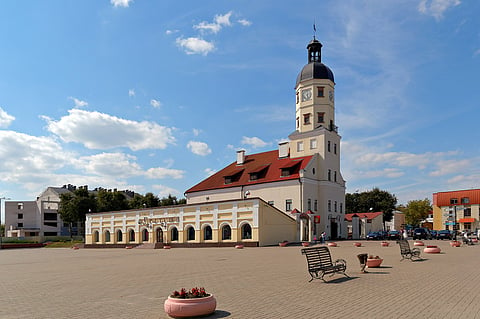

Evolution of EU Migration Policy
The European Union’s migration policy has undergone significant shifts over the past two decades, shaped by geopolitical events, security concerns, and humanitarian challenges. Since the 1999 Tampere European Council, the EU has sought to develop a common framework for managing migration, balancing security measures with human rights obligations. However, as migration increasingly intersects with foreign policy and international conflicts, the EU has adopted a more securitized approach.
One of the most striking examples of this shift is the EU’s response to Belarus following the 2020 Belarusian presidential election. After the EU imposed sanctions on the authoritarian regime of Aleksandr Lukashenko, Belarus retaliated by facilitating irregular migration to EU borders, creating a humanitarian and political crisis. This escalation underscores the complexities of migration policy, where state security, geopolitical tensions, and the rights of migrants collide.
From Cooperation to Control
The EU’s external migration policy has evolved through initiatives like the Global Approach to Migration and Mobility (2005) and the European Commission’s Agenda on Migration, which established a framework for engagement with non-EU countries. Initially, EU migration policy focused on cooperation with third countries, emphasizing legal migration pathways, development aid, and border management. However, the perception of an asylum and refugee crisis, particularly following the 2015 migration crisis, led to the expansion of externalized migration control. This shift included strengthening border security, negotiating repatriation and readmission agreements, and integrating migration management into broader foreign policy objectives.
Migration control is increasingly embedded within EU Common Security and Defence Policy (CSDP) missions. A key example is the EU Capacity Building Mission (EUCAP) Sahel Niger, which was initially designed to assist Nigerien authorities in combating organized crime and terrorism. Over time, its mandate expanded to include migration control, including training Nigerien security forces to prevent irregular migration. In Agadez, a major transit hub for migrants traveling from West Africa to Libya and Europe, the EU has established an outpost to monitor and curb migration flows.
This approach reflects the EU’s growing emphasis on preventing migration at its source, rather than managing it at its borders. As part of this strategy, the EU has signed readmission agreements with countries including Turkey, Pakistan, and Ukraine, ensuring that migrants who enter the EU irregularly can be returned. Non-binding agreements have also been established with Afghanistan, Guinea, Bangladesh, Ethiopia, Gambia, and Côte d’Ivoire.
The Belarus Crisis: From Election Dispute to Migration Weaponization
In August 2020, Belarusian President Aleksandr Lukashenko claimed victory in a sixth presidential election, securing 80% of the vote. However, international observers, including the Organization for Security and Co-operation in Europe (OSCE), deemed the election neither free nor fair. The EU refused to recognize the results, prompting mass protests across Belarus, the largest since the country’s independence in 1991. In response, the EU imposed sanctions on Belarusian officials and entities, targeting individuals involved in electoral fraud and state violence against protesters. Countries such as Poland and Lithuania provided direct support to opposition figures, offering visas and scholarships to dissidents and backing Belarusian independent media.
As EU sanctions escalated, Lukashenko responded by facilitating irregular migration to EU borders, particularly those of Poland, Lithuania, and Latvia. Belarusian authorities reportedly encouraged migrants from the Middle East and Africa to travel to Belarus under false pretenses, promising easy entry into the EU. Once in Belarus, many migrants were pushed toward the EU border, where they faced harsh conditions and violent pushbacks.
The EU accused Belarus of weaponizing migration as a form of hybrid warfare, using human lives to exert political pressure. In response, EU member states fortified their borders, with Poland constructing a 186-kilometer border wall and declaring a state of emergency. The crisis escalated further in June 2021, when a Ryanair flight traveling from Greece to Lithuania was forcibly diverted to Minsk to detain opposition journalist Raman Pratasevich. In retaliation, the EU banned Belarusian airlines from EU airspace and imposed further economic restrictions.
Geopolitical Consequences of the Belarus Crisis
1. Economic and Diplomatic Sanctions
As tensions between the EU and Belarus deepened, economic sanctions were expanded, targeting key sectors of the Belarusian economy, including:
• Banking and finance – Restricting access to EU financial institutions.
• Oil and gas – Limiting Belarus’ ability to trade in energy resources.
• Potash industry – One of Belarus’ most critical exports, heavily sanctioned by the EU.
As of 2023, the EU has sanctioned 287 Belarusian individuals and 39 entities, effectively isolating the country from European markets.
2. Belarus’ Deepening Dependence on Russia
With limited options for economic recovery, Lukashenko turned to Moscow for support. Russia provided:
• Emergency loans and financial aid to counteract EU sanctions.
• Military cooperation and joint exercises, reinforcing Belarus’ reliance on Russian defense systems.
• Diplomatic backing in international forums, preventing further UN actions against Belarus.
This alignment has pushed Belarus further into Russia’s geopolitical sphere, reducing its autonomy and making it more dependent on Russian economic and security structures.
3. Regional Polarization
The crisis has also exacerbated divisions within Eastern Europe, particularly between Belarus and its EU neighbors:
• Poland has taken a hardline stance, militarizing its border and restricting asylum claims.
• Lithuania and Latvia have similarly increased border security and implemented stricter immigration policies.
• The EU has struggled to balance security concerns with humanitarian obligations, leading to criticism from human rights organizations.
Humanitarian Consequences: The Plight of Migrants
The securitization of migration has fueled negative stereotypes of migrants as security threats rather than individuals in need of protection. This has led to increased xenophobia and discrimination against migrants in EU countries, particularly in nations facing political pressure to limit asylum claims.
As a result of the Belarus crisis, EU countries have introduced stricter asylum policies, leading to:
• Higher rejection rates for asylum applications.
• Increased deportations to countries where migrants face persecution.
• Reduced humanitarian access, with NGOs reporting difficulties in assisting stranded migrants